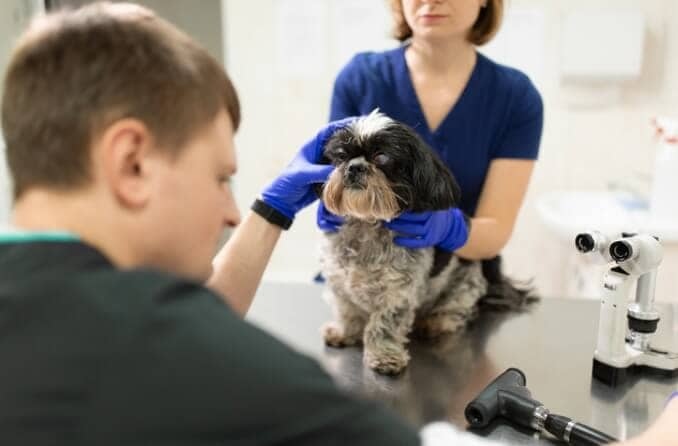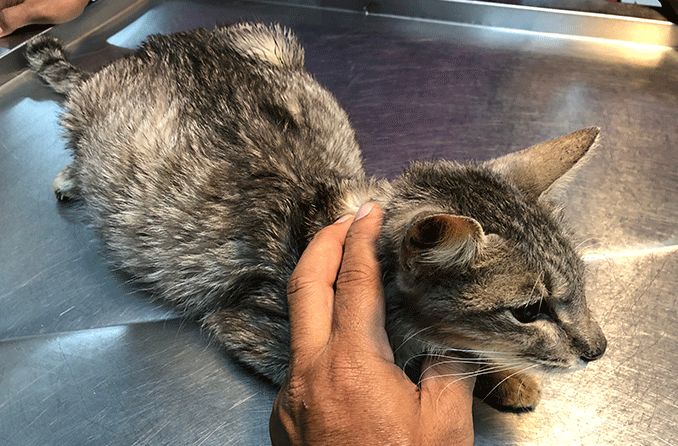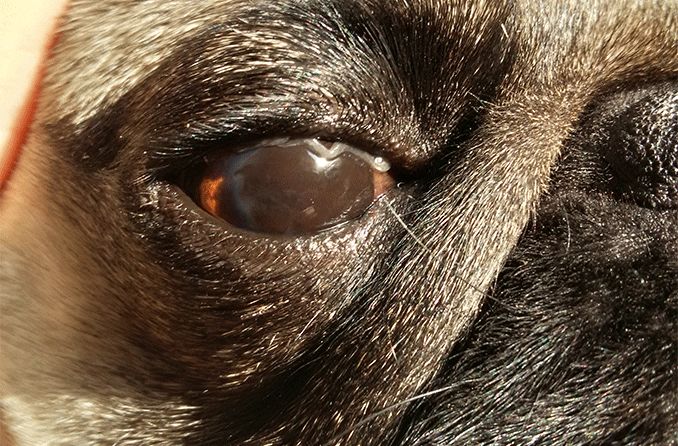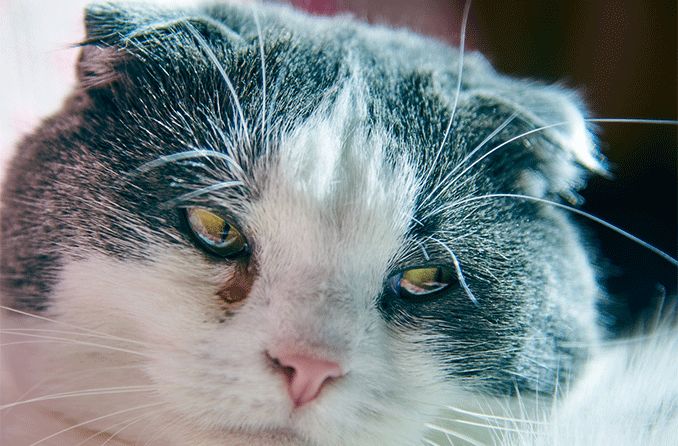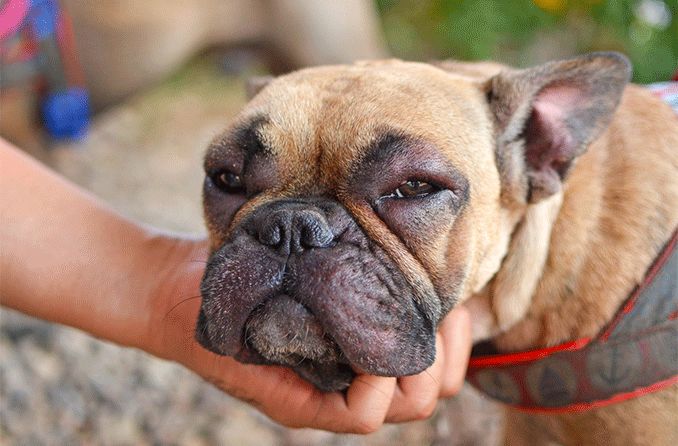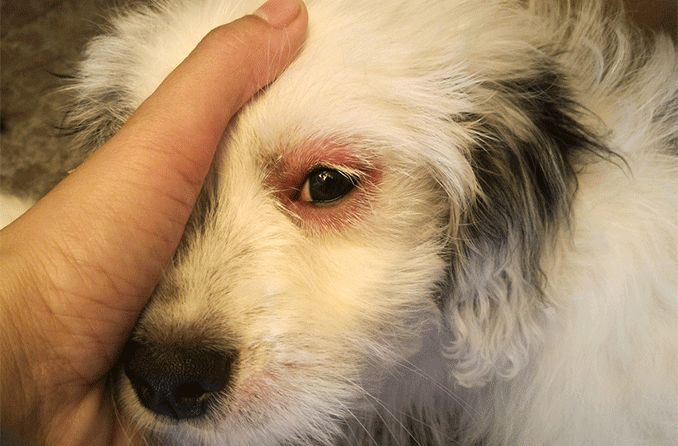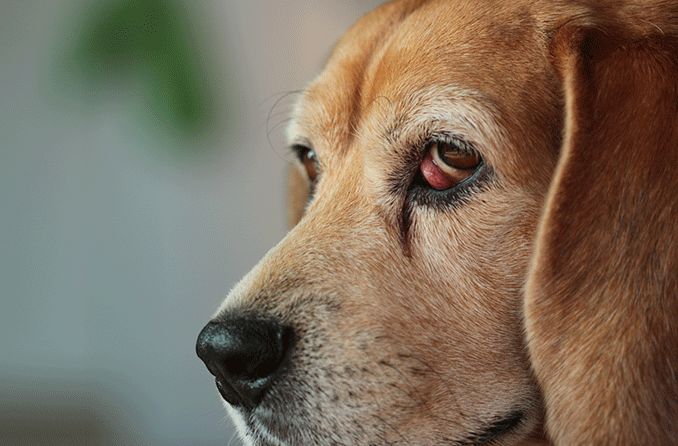Is glaucoma common in dogs?
Dogs get many of the same eye conditions as humans, including glaucoma. Glaucoma involves higher-than-normal pressure in the eyes. It can cause serious pain and lead to irreversible blindness if left untreated. Glaucoma is common in dogs, affecting up to 15,000 canines every year in the U.S.
That said, it’s important to recognize the signs of glaucoma in your pet, how to treat it and how to manage it as part of your furry friend’s lifestyle.
What causes glaucoma in dogs?
Glaucoma is caused by high pressure— known as intraocular pressure (IOP) — inside the eye. Watery fluid, called aqueous humor, is produced by tissue behind the lens called the ciliary body. This fluid flows slowly around the lens and into the anterior chamber — the space between the iris and the cornea.
Normally, this fluid drains at the angle where the iris meets the cornea, called the drainage angle. IOP rises when the aqueous humor fails to flow out of the drainage angle properly. The ciliary body continues to produce fluid, which cannot drain. It accumulates, causing the IOP to climb, thus causing glaucoma.
In dogs, a raised IOP can be either genetic or triggered by a separate eye condition, such as an injury.
Glaucoma can damage the retina — the light-sensitive tissue in the eye. It can also harm the optic nerve, which delivers information from the eyes to the brain. If the optic nerve is affected, it can eventually cause blindness in your dog.
It’s very important to have your dog’s vision routinely checked during vet visits. The vet can detect and prevent conditions like glaucoma from occurring or worsening.
Types of glaucoma in dogs
There are two classifications of glaucoma in dogs: primary and secondary. Primary glaucoma is caused by genetic traits, while secondary glaucoma is the result of another eye condition.
Glaucoma can also occur suddenly or develop over time. Sudden onset glaucoma is also called acute glaucoma. A slower developing, long-term condition is called chronic glaucoma.
Primary glaucoma (inherited) in dogs
Primary glaucoma in dogs is an inherited condition that affects the drainage efficiency of aqueous fluid in the eye. There are two types of this type of glaucoma:
- Primary closed-angle glaucoma (PCAG)
- Primary open-angle glaucoma (POAG)
Canine primary closed-angle glaucoma (PCAG)
Primary closed-angle glaucoma (PCAG) is associated with a genetic abnormality called goniodysgenesis (gō’nē-ō-dis-jen’ĕ-sis). This abnormality affects the drainage angle of the eye.
Goniodysgenesis is more often found in specific breeds. These include Cocker Spaniels, Border Collies, and Siberian Huskies (although it can occur in any dog).
If your dog is diagnosed with goniodysgenesis, it doesn’t necessarily mean that they will get glaucoma — but it greatly increases the risk. Should your dog be a carrier of the abnormality, you need to monitor eye problems closely.
If redness, cloudiness or blindness occur, have them looked at immediately so that your vet can check their eye pressure levels.
Canine primary open-angle glaucoma (POAG)
Primary open-angle glaucoma (POAG) is also inherited and caused by a genetic mutation.
Unlike PCAG, it is not associated with goniodysgenesis, and the pressure in a dog’s eyes increases more gradually than it does in PCAG. In fact, any vision loss that happens with POAG can take place over a period of months to years. The symptoms are also slow to occur.
POAG is more commonly found in breeds such as Beagles, Basset Hounds, Shar-Peis and Petit Basset Griffon Vendéens.
Secondary glaucoma (non-inherited) in dogs
Secondary glaucoma is not inherited. It results from an underlying eye condition, including conditions such as:
- Traumatic Injury to the eye – can lead to blockage of the drainage angle
- Tumors – can cause a physical barrier in front of the drainage angle
- Uveitis (inflammation of the eye’s interior) – can cause scar tissue and debris to block the drainage angle
- Intraocular bleeding – blood clots can prevent proper drainage of eye fluids
- Eye lens damage – swelling and inflammation due to lens damage can block the drainage angle
- Anterior dislocation of the lens — can trap fluid behind the lens and cause the drainage angle to become blocked
- Cataracts or cataract surgery
- Retinal detachment
Secondary glaucoma is more common in dogs than primary glaucoma.
SEE ALSO: How good is a dog’s vision?
Chronic vs. acute glaucoma in dogs
Glaucoma often develops slowly over a period of days, months or years. This is known as a chronic phase. It should be monitored closely and treated as directed by your veterinarian to prevent the condition from worsening.
In some cases, glaucoma can develop within 12 to 24 hours. This is called acute or sudden onset glaucoma in dogs.
Acute glaucoma is an emergency. Take your dog to your veterinarian or an emergency animal clinic immediately if you believe he or she is experiencing acute glaucoma.
Symptoms of canine glaucoma
Dogs can’t use words, so looking out for their physical symptoms is crucial when it comes to eye conditions like glaucoma.
Some symptoms associated with both primary and secondary glaucoma include:
- Swelling of the eye
- Constant blinking, aversion to bright light
- Redness
- Vision loss
- Dilated pupils that don’t respond when a light is shined on them
- Watery eye discharge
- Loss of appetite
- Cloudiness or hazy bluish appearance of the eye
- Lethargy or a loss of desire to play
Is glaucoma painful for dogs? Yes. Your dog may show you that he is in pain by rubbing or pawing at his eye or by displaying sensitivity when you pet him.
How is glaucoma diagnosed in dogs?
Glaucoma is diagnosed through a physical examination of your dog’s eyes, along with a measurement of the IOP.
In order to measure the IOP in your dog’s eyes, your veterinarian will use a special tool called a tonometer. Further tests may be performed if your dog is experiencing blindness.
How is glaucoma treated in dogs?
In order to prevent damage and irreversible blindness, your dog’s IOP needs to be lowered as soon as possible after it is detected as higher than normal.
Acute glaucoma in dogs requires swift treatment and is treated with medications that lower the IOP very quickly. This can include:
- Mannitol (IV) – a diuretic that can reduce eye pressure within 15 minutes of use
- Latanoprost (eye drops) – a prostaglandin analog that can reduce eye pressure by 45% within 20 minutes of use
- Topical or oral anti-inflammatories
In emergency cases, your veterinarian will administer these types of medications. Emergency surgery or other forms of treatment may be used to treat acute glaucoma, as directed by your vet.
Chronic glaucoma in dogs requires lifelong treatment with both drugs and regular eye pressure checks. Some medications that may be prescribed to manage the condition include:
- Timolol (eye drops) — a beta-blocker that works to decrease fluid production in the eyes
- Brand names include Timoptic and Betimol.
- Dorzolamide (eye drops) — a carbonic anhydrase inhibitor used to treat high intraocular pressure
- Brand names include Trusopt and Cosopt.
In addition to these special medications, it’s important to keep your dog comfortable. Your vet may prescribe pain relievers to soothe discomfort. Surgery may also be suggested for some cases of long-term glaucoma.
From there, it’s important to monitor your dog's eyes for any changes and to have their vision checked regularly by your veterinarian.
SEE RELATED: What eye drops are used for dogs?
How much does it cost to treat glaucoma in dogs?
The cost of treatment for dogs with glaucoma varies from case to case. Some methods of treatment are more expensive than others, and options may be limited. It’s also important to note that treating glaucoma is a long-term commitment.
Talk to your veterinarian if you have financial concerns. Don’t let finances get in the way of treating your pet’s serious condition as well as you can.
You may also consider pet insurance for your furry friend to help with costs.
Are any dog breeds more likely to have glaucoma?
As mentioned, Border Collies, Basset Hounds, Shar-Peis, Siberian Huskies, Cocker Spaniels and Petit Basset Griffon Vendéens are more likely to get glaucoma.
Some additional breeds that are more susceptible to glaucoma include:
- Dalmatians
- English and Welsh Springer Spaniels
- Great Danes
- Poodles
- Beagles
- Golden Retrievers
- Many terrier breeds
Keep in mind that dogs aren’t guaranteed to have glaucoma solely based on their breed. It’s just that the likelihood of the condition occurring is heightened. Purebred dogs may be more likely to develop glaucoma, but the condition can also occur in mixed breeds.
Whether your dog has glaucoma or another medical condition, make sure you are giving them the care that they need. This includes regular check-ups, medication and treatments when necessary, and of course, lots of love and treats.
READ NEXT: A guide to caring for a blind or vision-impaired dog
